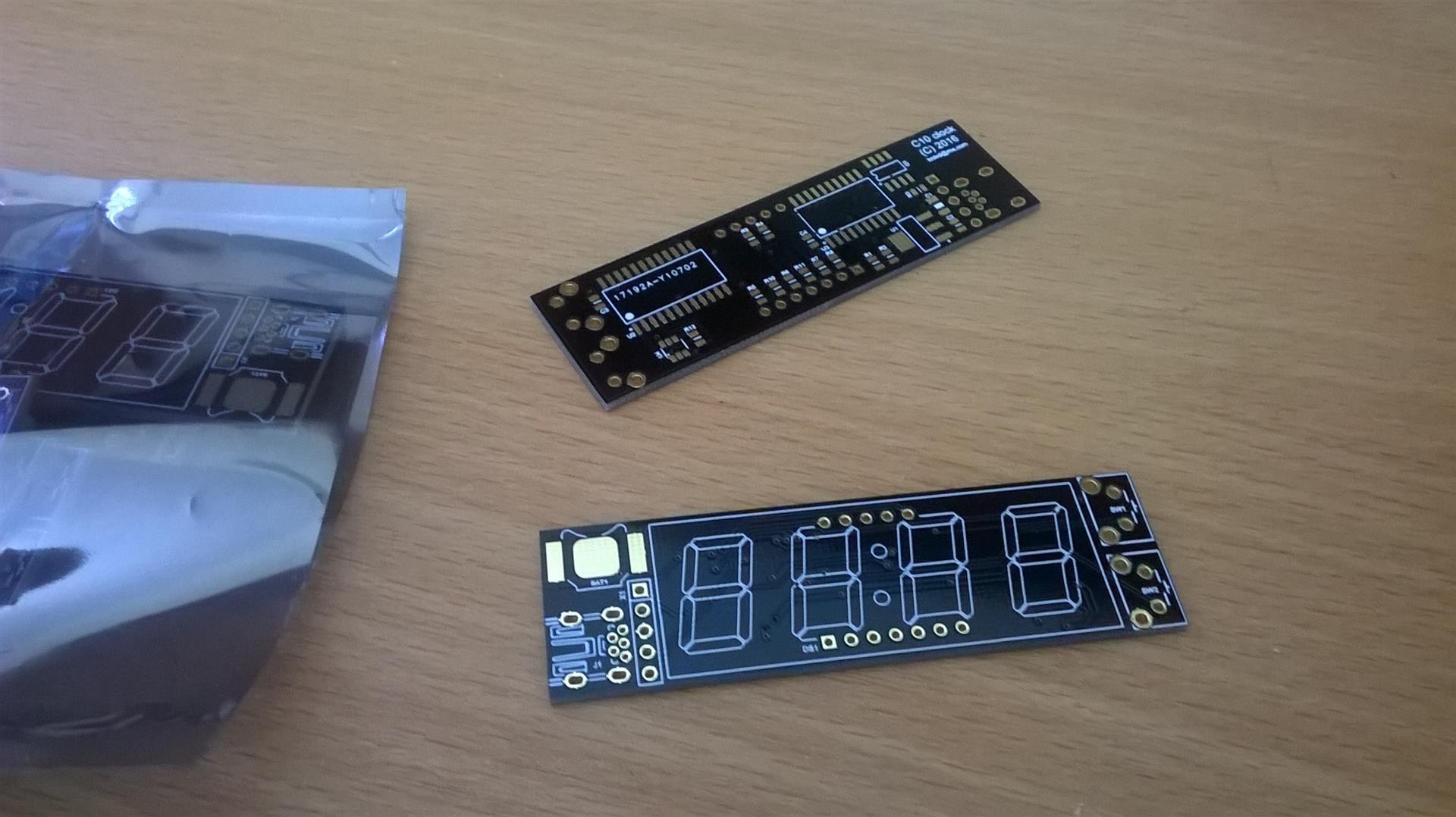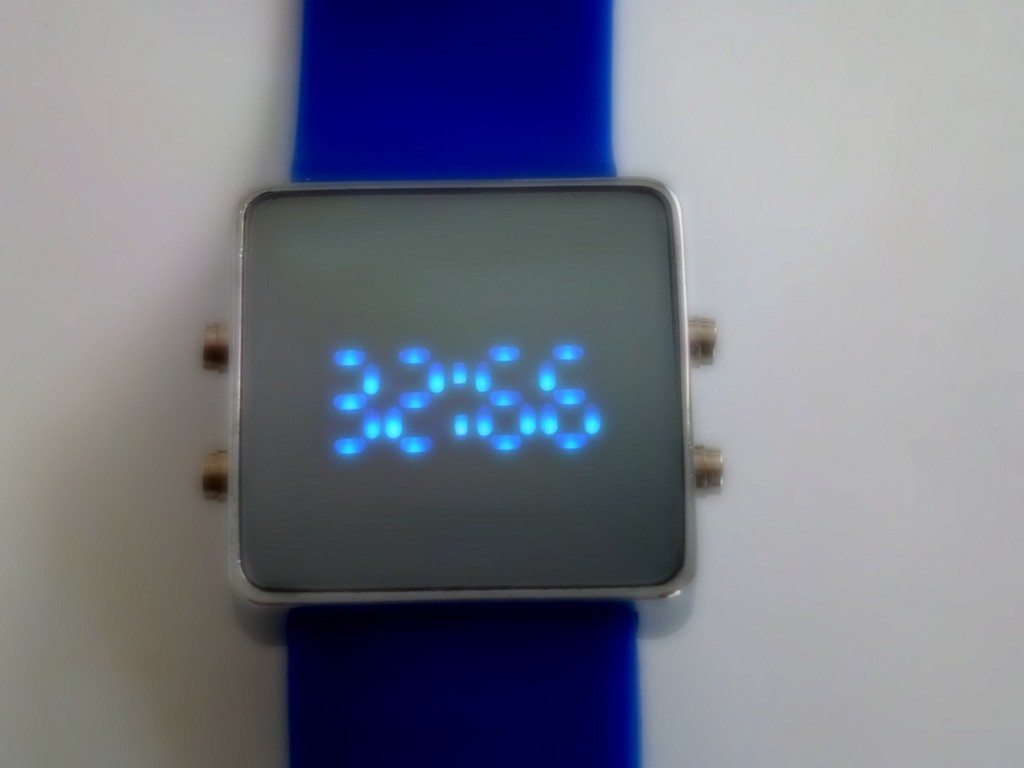-
Another C10 demo
06/16/2017 at 20:02 • 0 commentsA real wristwatch! :-)
-
PCB
05/03/2016 at 14:08 • 2 comments -
Where is the zero?
04/23/2016 at 07:45 • 4 commentsIn my initial concept I am basing the C10 moment 00:00:00 to match exactly the standard time 00:00:00, however I am also considering another variant.
What in particular defines the moment zero? In the standard time it is the unclear definition of 'midnight'. I have not been able to find any better explanation that this. But what defines when is midnight?
There is also another problem in this approach. The measures which small numbers, which are closer to the mind, remain largely unused because people are normally asleep during that time. So from the current clock's point of view we first rest, and then do something, instead of the opposite.
I am thinking about the option to base the C10 moment zero on some more specific term, which can define the actual start of the day and leave the finishing intervals for sleep. This translated into current time would mean that the moment 00:00:00 in a C10 clock would be somewhere around 03:00:00 in the standard time.
In my small conversion program this could be easily done by a very small modification (tested in CodeBlocks):
#include <stdio.h> #include <stdlib.h> #include <math.h> // this little program calculates and prints the intersection points between standard and C10 times void main(void) { unsigned long h,m,s; float t; for(h=0; h<24; h++) for(m=0; m<60; m++) for (s=0; s<60; s++) { // the day in C10 starts at 3AM standard time t=((float)(h*3600+m*60+s)/8.64)-1250; if(t<0) t=10000+t; if(t>=10000) t-=10000; if(t==ceil(t)) printf("%02lu:%02lu:%02lu.....%02.2f\r\n",h,m,s,(t/100)); } } -
Time for some coding...
04/21/2016 at 19:56 • 8 commentsTime to start putting things together. Counting C10 time is a really simple thing.
Here is the code that does the whole job of counting time and date:
// C10 date/time structure struct { unsigned char tick; // 0..99 unsigned char centival; // 0..99 unsigned char interval; // 0..99 unsigned char day; // 0..9 unsigned char decade; // 0..36 unsigned int year; } dt; // must be executed at every exact 0.0864s (one tick) void clockC10(void) { if (++dt.tick>99) { dt.tick=0; if (++dt.centival>99) { dt.centival=0; if (++dt.interval>99) { dt.interval=0; if (++dt.day>9) { unsigned char yl=36; // year length // the year will have 37 decades if odd // number or multiple by 40 if ((dt.year&1) || (dt.year%40)==0) yl++; dt.day=0; if (++dt.decade>=yl) { dt.decade=0; dt.year++; } } } } } } -
Accurate setting of a C10 clock from within our current reality
04/21/2016 at 09:38 • 5 commentsThere are exactly 400 intersection moments (occurring at every 216th standard second) between the standard and C10 times, assuming that the tick is always zero.
Setting a C10 clock in a standard time environment is only possible at any of those 400 moments.
// this little program calculates and prints the // intersection points between standard and C10 times void main(void) { unsigned long h,m,s; float t; for (h=0; h<24; h++) for (m=0; m<60; m++) for (s=0; s<60; s++) { t=((float)(h*3600+m*60+s)/8.64); if (t<0) t=10000+t; if (t==ceil(t)) printf(" %02d:%02d:%02d %02.2f\r\n",h,m,s,t/100); } }Proposed model for C10 world time zones
The world is divided in 10 equally wide zones: 0 to 9, each containing 10 intervals.
The border between zone 9 and zone 0 is where the date is changed.
Zones are only positive numbers.
-
Still in the archive
04/19/2016 at 09:44 • 0 commentsThis is the first C10 clock which I made back in 2011. It wasn't very accurate though, because it was built around a standard clock and the counting and timing corrections were in software.
C10 tick is 0.0864s, which translated into frequency is the odd 11.574(074) Hz. There is no such crystal on the market, and I didn't want to order a custom one, but fortunately there are many ways to achieve this exact frequency by using standard frequency crystals:
20kHz/1728
30kHz/2592
31.25kHz/2700
40kHz/3456
... and so on.
In my current schematic I use 100kHz clock divided by 8640. The reason for this is purely to increase the accuracy after division.
The best accuracy in general can be achieved by using a 19.2MHz crystal (with divider 1658880) as these come in the lowest frequency deviation and lowest temperature drift options on the market. But such high input frequency will significantly increase the power consumption in standby as well, so I decided to make a compromise on that for this demo.
-
In the past...
04/18/2016 at 20:06 • 0 commentsA few years ago I built a simple electronic prototype for C10 clock at home for testing. It is amazing how on the third day one can really start thinking "...it is 33 o'clock", obviously we are 1/3 into the day. "55 o'clock" is time when people usually have their lunch as just after half into the day, "75 o'clock" - people normally go home after work, "90 o'clock or later" - time for bed. I tested the system with my two kids (5 and 10 years old at the time) and they needed just a few words to understand it! Now, how many books and pictures have been made to explain to little kids how current time works?
Another good thing about C10 is the actual length of its base measures: one interval takes about 14.5 current minutes – long enough time for everyday use, but far not as long as the hours in a 10-hour day. One centival refers to about 8.5 current seconds – very convenient for referring to short events in the everyday human life. One tick – a very short time, good for scientific use.Of course it is way too optimistic to assume that everyone will happily just accept a new time system in matter of days. In the most favourable estimation it may take up to a century for such a change to happen. Various ethnic, religious and even business groups may strongly oppose to any change at all, so a change must start from the children. If the very young people adopt and understand a new way of measuring the time, it will eventually be passed on to the next generation, to the one after it and so on until one day fully adopted.
 Kn/vD
Kn/vD
